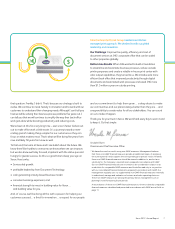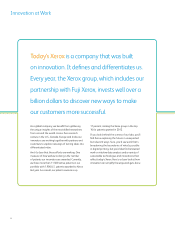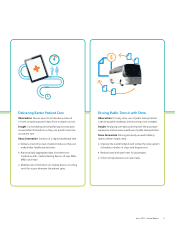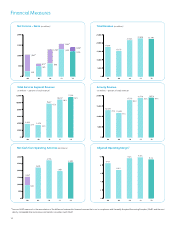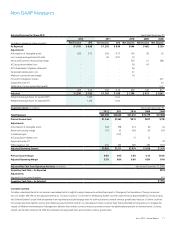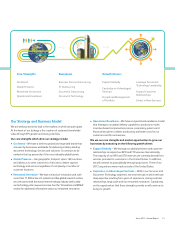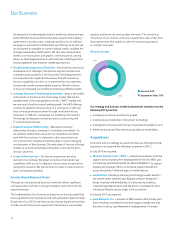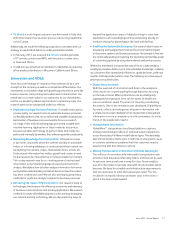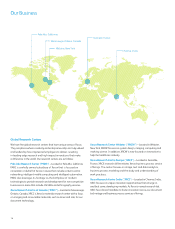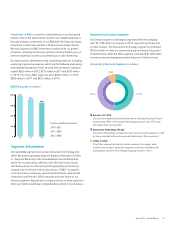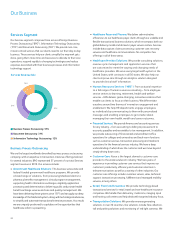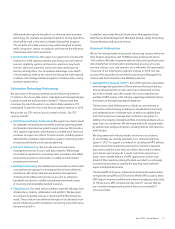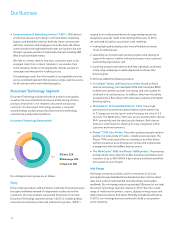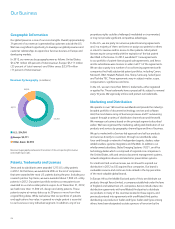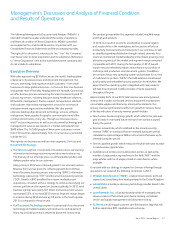Xerox 2012 Annual Report Download - page 19
Download and view the complete annual report
Please find page 19 of the 2012 Xerox annual report below. You can navigate through the pages in the report by either clicking on the pages listed below, or by using the keyword search tool below to find specific information within the annual report.17Xerox 2012 Annual Report
• XL World, a multi-lingual customer care firm based in Italy that
will further expand our business process outsourcing capabilities
across Europe.
Additionally, we made the following acquisitions consistent with our
strategy to expand distribution to under-penetrated markets:
• In February 2012, we acquired R.K. Dixon, a leading provider
of IT services, printers and MPS, with locations in seven cities
in Iowa and Illinois.
• In addition, we enhanced our distribution capabilities by acquiring
office products distributors in Wisconsin, California and Illinois.
Innovation and RD&E
Xerox has a rich heritage of innovation that continues to be a core
strength of the company as well as a competitive differentiator. Our
investments in innovation align with growth opportunities in areas like
business services, color printing and customized communication. Our
overall aim is to create value for our customers, for our shareholders
and for our people by influencing the future in certain key areas. Our
research work can be categorized under four themes:
• Implementing Agile Business Processes: To enable true business
process agility, our research aims to automate business processes
via flexible platforms that run on robust and scalable infrastructures.
Automation of business processes benefits from our research
on image, video and natural language processing coupled with
machine learning. Application of these methods to business
processes enables technology to perform tasks that today are
performed manually by workers, thus enhancing worker productivity.
• Harvesting Knowledge from Information: Information comes
in two forms: structured, where the content sits tidily in searchable
indices or in limiting databases; or unstructured, where content can
be anything from photos, videos, hand-written forms, emails, etc.
Unstructured information has endless growth and creates a need
for businesses to be more effective in mining context from content.
This is a key research area for us – making sense of unstructured
information using natural language processing and semantic
analysis. We explore how to better analyze information for human
use by better understanding contextual detail on how the content
has been created and used. We are also developing proprietary
methods for predictive analytics applied to business processes.
• Delivering the Value of Personalization: Our research leads to
technologies that improve the efficiency, economics and relevancy
of business communications and printing applications. We research
methods to create affordable ubiquitous color printing, leveraging
our solid ink printing technology. We are also exploring ways to
expand the application space of digital printing to cover new
applications such as packaging printing and printing directly on
mediums that go far beyond paper, like food and clothing.
• Enabling the Sustainable Enterprise: Our research also focuses on
developing technologies that minimize the environmental impact
of document systems and business processes. An example is how we
are continually working on lowering the operating and standby power
of our printing systems by using new materials and print processes.
Within this framework, one particular area of focus is data analytics –
simplifying complex data to turn it into actionable knowledge – helping
our customers drive operational efficiencies, guide decisions, yield new
insights and help predict what is next. The following are a few ways in
which we are achieving this:
• Digital Nurse Assistant
With the overload of information and data in the workplace,
often more time is spent wading through data than focusing
on the task at hand. When information can be intelligently
aggregated and grouped, time can be saved. In healthcare,
nurses sometimes spend 75 percent of their day coordinating
documents. One of the innovations we developed, Digital Nurse
Assistant, collects and categorizes all patient information into
a simple, touch-screen dashboard. This means that critical patient
information is not in a computer or in a file somewhere, it’s in the
hands of the people who need it.
• Mining Mobile Information
GlobalMine™, a proprietary cloud-based platform, captures,
analyzes and manages millions of technical support interactions
across thousands of different mobile device types. This data helps
telecommunications clients react, in real time, to any systems issues
or customer satisfaction problems that their customers may be
experiencing with their devices or service.
• Making Transportation Information and Data Meaningful
The millions of commuters who take public transportation also
provide critical data about their daily habits, and that can be used
to optimize service and save money for cities. Xerox analytics
uses this information to provide cities with structured data, which
becomes the basis for schedule and infrastructure improvements
that are responsive to what their passengers need. This has
resulted in increased ridership and lower costs in the cities in
which it has been implemented.


